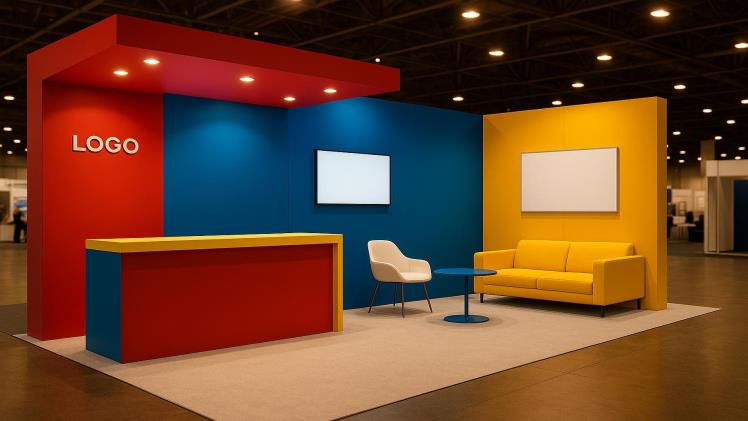
When you think about booth design, your first thoughts might be about graphics, banners, or the latest tech features. While those matter, the real secret to drawing in and keeping visitors often lies in psychology. Subtle cues like color choices, layout flow, and the way space is used can significantly impact how people feel in your booth, how long they stay, and even whether they decide to engage with your brand.
If you want to stand out at your next event, it helps to explore booth design ideas that go beyond surface-level visuals and lean into the science of human behavior.
The Power of Color Psychology
Color is one of the most immediate elements people notice, and it plays a huge role in shaping perception. Different colors evoke different emotional responses, and that can influence how visitors feel when they walk by your booth.
- Blue often creates a sense of trust and calm, making it a popular choice for financial, healthcare, and tech companies.
- Red is energizing and bold, great for sparking excitement and urgency but best used in moderation.
- Green is associated with growth, health, and sustainability, perfect for eco-friendly brands or wellness industries.
- Yellow conveys optimism and warmth but can become overwhelming if overused.
The best booth design ideas often involve pairing brand colors with psychological effects. For example, a wellness company might mix greens and soft neutrals to create a soothing vibe, while a sports brand could lean into vibrant reds and bold contrasts to spark energy.
Layout that Guides Behavior
The way you arrange your booth space can either invite people in or unintentionally push them away. Psychology tells us that humans naturally prefer spaces that feel open, easy to navigate, and free from clutter.
Here are a few booth design ideas rooted in spatial psychology:
- Create a clear entry point: Avoid blocking the entrance with tables or displays. People are more likely to step in if the booth feels accessible.
- Encourage flow: Arrange elements in a way that naturally guides visitors through your space, almost like a walking path. Curved layouts or open-ended designs often feel more inviting than rigid, box-like setups.
- Use zones: Break your booth into small zones with different purposes, such as a demo station, a conversation area, and a photo backdrop. Visitors will instinctively move from one area to the next, extending their time in your booth.
When the layout feels intuitive, people don’t have to think about where to go. Instead, they can focus on your brand story.
The Role of Space and Comfort
Crowded or poorly designed spaces can create discomfort, leading people to exit quickly. Psychology shows that humans need a balance of personal space and social interaction, and your booth should reflect that.
Some ways to integrate this insight include:
- Provide breathing room: Avoid stuffing too many products or signs into the booth. Negative space helps visitors process information without feeling overwhelmed.
- Offer seating: Even a small bench or lounge area can encourage people to stay longer, giving your team more time to connect.
- Think about traffic flow: Position high-interest features (like demos or giveaways) in areas that won’t block walkways. People are less likely to stop if they feel they’re in the way of others.
By respecting comfort zones, you create an environment where visitors feel at ease, which often leads to more meaningful conversations.
Stimulating Curiosity with Subtle Cues
Psychology also tells us that curiosity is a strong motivator. Strategic booth design ideas can use this to your advantage by hinting at something worth exploring inside.
For example:
- Partial visibility: Display a product slightly obscured or framed in a way that makes people want to come closer.
- Interactive elements: Games, touchscreens, or hands-on experiences spark curiosity and invite participation.
- Layered storytelling: Instead of showing everything at once, design your booth so that information unfolds as visitors move through the space.
Curiosity keeps people engaged, and engagement often leads to stronger connections with your brand.
Designing for Lasting Impressions
The most effective booth design ideas are the ones that make people want to stay, explore, and connect. While technology and flashy graphics may grab attention for a moment, it’s the underlying psychology that leaves a lasting impression.
When you design with human behavior in mind, your booth becomes more than a display. It becomes an experience people remember long after the event ends.